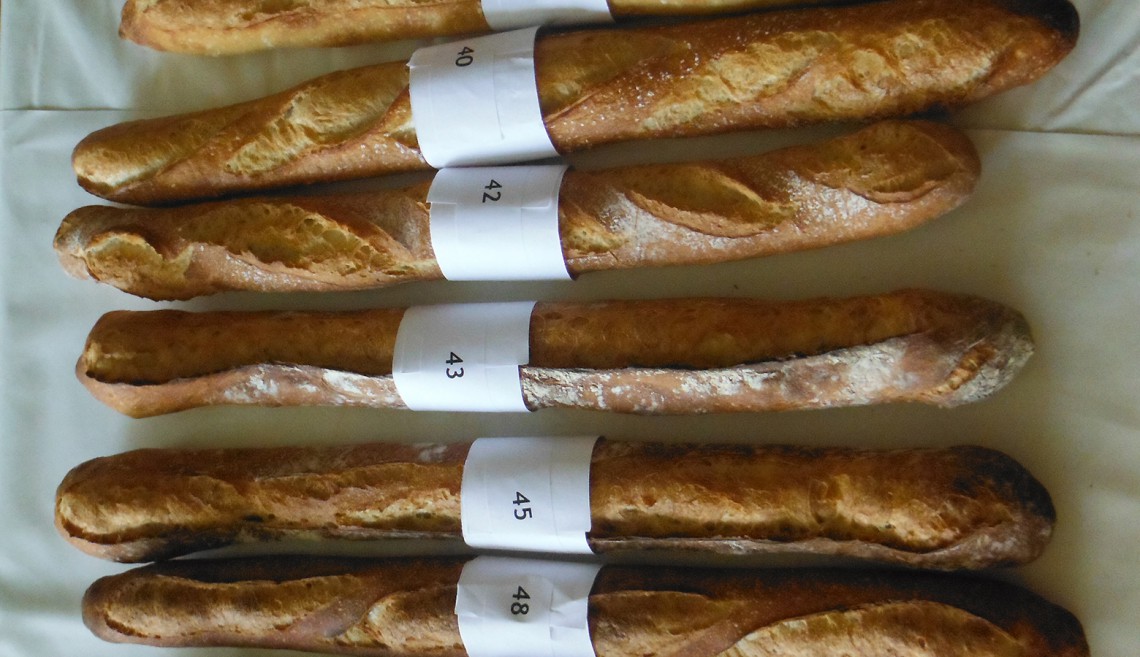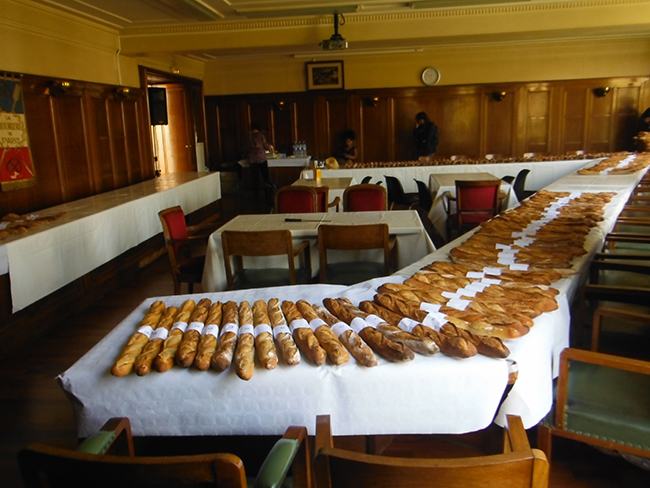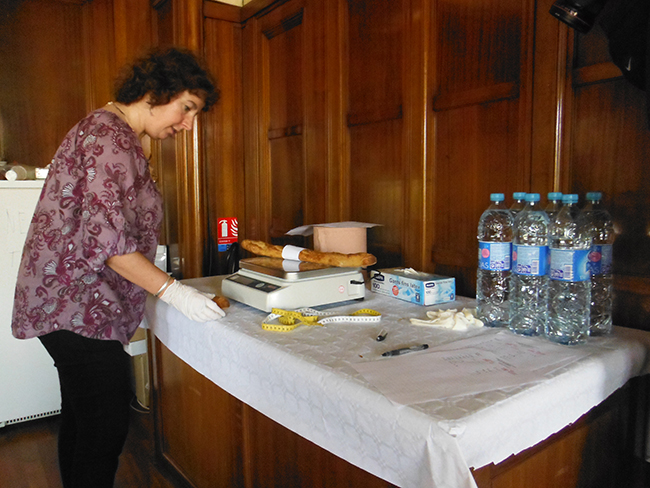
Paris is everywhere full of art, including the boulangeries
Design student explores the similarities between the art studio and the bakery.
With its beautiful city parks, wide, open avenues and one of Europe’s most beautiful rivers, its no surprise that so many artists have called Paris home at one time or another. The Louvre, Centre Pompidou and Musée D’Orsay house some of the world’s greatest works of art, but you do not need to go to a museum to see art. From its Haussmannian architecture and gothic cathedrals to the art nouveau metro entrances and design boutiques every few hundred meters, Paris is a city that appreciates the importance of both form and function equally.
The food is no exception.
Though the idea may seem laughable and perhaps truly foreign, there are many similarities between cooking and making a piece of studio art. Where the studio artist uses textures, colors and forms to create a work of art, the cook engages the faculties of sight, smell, taste, touch and even sound to create his or her masterpiece.

Bread as art
When we think of art, we think of paintings and sculptures, the fine arts, the performance arts such as music and dance, and even design, the incorporation of art into everyday life. Despite the suite of television shows portraying food as an art form from Iron Chef to Ace of Cakes, in the United States, the arts of cooking and baking are almost never mentioned on the same level as their more traditional cousins, the fine and performance arts.
However, this may be with good reason.
It is not that the well-crafted piece of food does not exist in the United States – the Bay Area is known for its artisanal food products and San Francisco’s Fisherman’s Wharf, for example, is home to Kara’s Cupcakes, Boudin Sourdough Bakery and Ghirardelli Square. It is just much more rare. The patisseries and boulangeries found every 200 meters throughout Paris have not yet been translated into the American language of supermarkets and bakeries.
With so many different interpretations, no ideal version of the baguette exists.
But can bread be art? The French treat it as such. Each year Paris’ Professional Chamber of Artisanal Boulangers and Patissiers holds an annual competition, Le Concours de La Prix de La Meilleure Baguette, to determine the best baguette in all of Paris.
With a grand prize of 4,000 euros and a noticeable increase in sales to any boulanger who places in the top 10, the competition is no joke. Each entrant must submit two baguettes measuring between 55 and 70 centimeters and weighing in between 250 and 300 grams, with a salt to flour ratio no greater than 18 grams of salt per kilogram of flour. While the baguettes are judged on cuisson (how it is baked, goût (taste), mie (crumb), odeur (smell) and aspect (appearance), determining the best baguette is a difficult task.
The best of all possible baguettes
When I heard the event would be held during my stay in Paris, I decided that, as someone who loves bread, it was an event I would not miss.
On the day of the competition, I biked over after class and, posing as a student journalist (not knowing at the time that I would be writing this article), entered the competition venue, where I had the chance to talk about the culture of boulangeries with two of the competing boulangers, Yann Desgranges and Shmassa Shnoli.
While Shnoli was new to the industry, Desgranges came from a long line of boulangers and placed in the top 10 almost regularly, as high as third twice. Both had been working since early in the morning and had made at least 50 baguettes each before selecting two for the competition.
During our conversation, I noticed that their baguettes were particularly croustillant (a combination of crunchy and crusty), almost to the point of being burned. What they told me completely changed my perspective on bread.

They explained that there are as many opinions on how to best make a baguette as there are boulangeries in Paris. Though they believed the best baguettes were very croustillant, others preferred them more lightly baked. Some use only a little salt, others plenty. This is what makes the Parisian baguette truly a piece of art.
With so many different interpretations, no ideal version of the baguette exists. Though each baguette must meet a strict set of criteria, it is impossible to say one style is better than another. Like comparing the works of Picasso to those of Michelangelo, while some works may be better than others, it is impossible to categorically state that one is greater than the other.
So, while every boulanger would like to take home first, when I asked Desgranges if there was a big difference between first and placing in the top 10, he said, “C’est pas grave,” the French equivalent of “No worries.”
How to eat a baguette
While the amount of pastries and breads in the average boulangerie is enough to overwhelm you, typically only two types of baguettes exist – the everyday variety costs less than a euro, while the baguette tradition, the more artisanal version, costs a few cents more.
Though all baguettes are made of the same four ingredients – water, flour, yeast and salt – and therefore share the same relative taste, the texture of the crust and the airiness of the inside of the bread will vary with the baking methods of different boulangeries.
While a baguette is always a good idea, how you eat it can also change how you enjoy it. Food—and bread in particular—plays an important cultural role in France.
Unlike many Americans, the French typically buy the ingredients for a meal the day it is cooked to keep food fresh and avoid throwing out food. So it is rare for a French family to keep bread for more than one day. Equally as rare is to see a French man or woman walking while eating, as food is something to be enjoyed sitting down.

While most Parisian food costs much more than the average American meal, a baguette will never cost you much more than a euro and twenty cents, an incredible deal considering its size. The typical 65-centimeter baguette equals just over 2 feet of bread, the ideal size for sharing. Though eating a baguette is sure to be a rewarding and satisfying experience, it is even better when shared with a friend.
